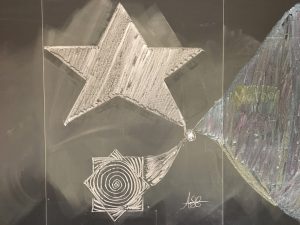Five years ago, I was luck to travel to Mombasa, Kenya as a part of a summer program. On day on a car ride through Mombasa, I was instantly struck by powerful a quote from the leader Mahatma Gandhi on a billboard.

My whole worldview was shaped by a singular notion of victory and glory. Victory was using one’s power, skill, and talents to reduce one’s enemies into the backs of history books. Victory meant not compromising. One must try again and again and never take no for an answer. But our world is not perfect, often the morally righteous lack the resources to face those with the power.
But victory is never absolute and defeat never permanent, an idea prominently shown through Jesus when tempted by Satan who offered him all worldly power and possessions in exchange for Jesus to worship him, which Jesus refuses. Although Jesus is later crucified by the Romans who view him as a threat to their rule, in the ultimate triumph the Roman Catholic Church is centered in Rome, the capital of the empire that once thought it had defeated Jesus. Within this story, Satan is a figure whose evil allows Jesus and all individuals to have a good conscious. It is not God’s power that makes Jesus or individuals good, but the rejection of evil for the worship of God.
In a strikingly similar story, Hussein, the Prophet’s grandson, faces a powerful army lead by Yazid who wants recognition as the true Caliph. In tragic events, Hussein is martyred by Yazid’s army after being deprived of water, and his head is brought back to Yazid’s court. Yazid might have wielded more power than Hussein, but ultimately power is fleeting and the example of Hussein’s death brought profound understanding of what victory truly means even when facing defeat, and Hussein is remembered and celebrated today among both Sunni and Shiite Muslims.

In order to artistically represent this I drew two with chalk areas. The larger one on top represents Yazid’s powerful army, and the smaller one below represents Hussein and his weaker army. The two areas converge an a point where a powerful collision occurs. Although Yazid is more powerful, Hussein is able to ultimately become victorious in defeat, and his victory brings color and light into the world; a powerful example for anyone facing injustice by a powerful force.
Categories: